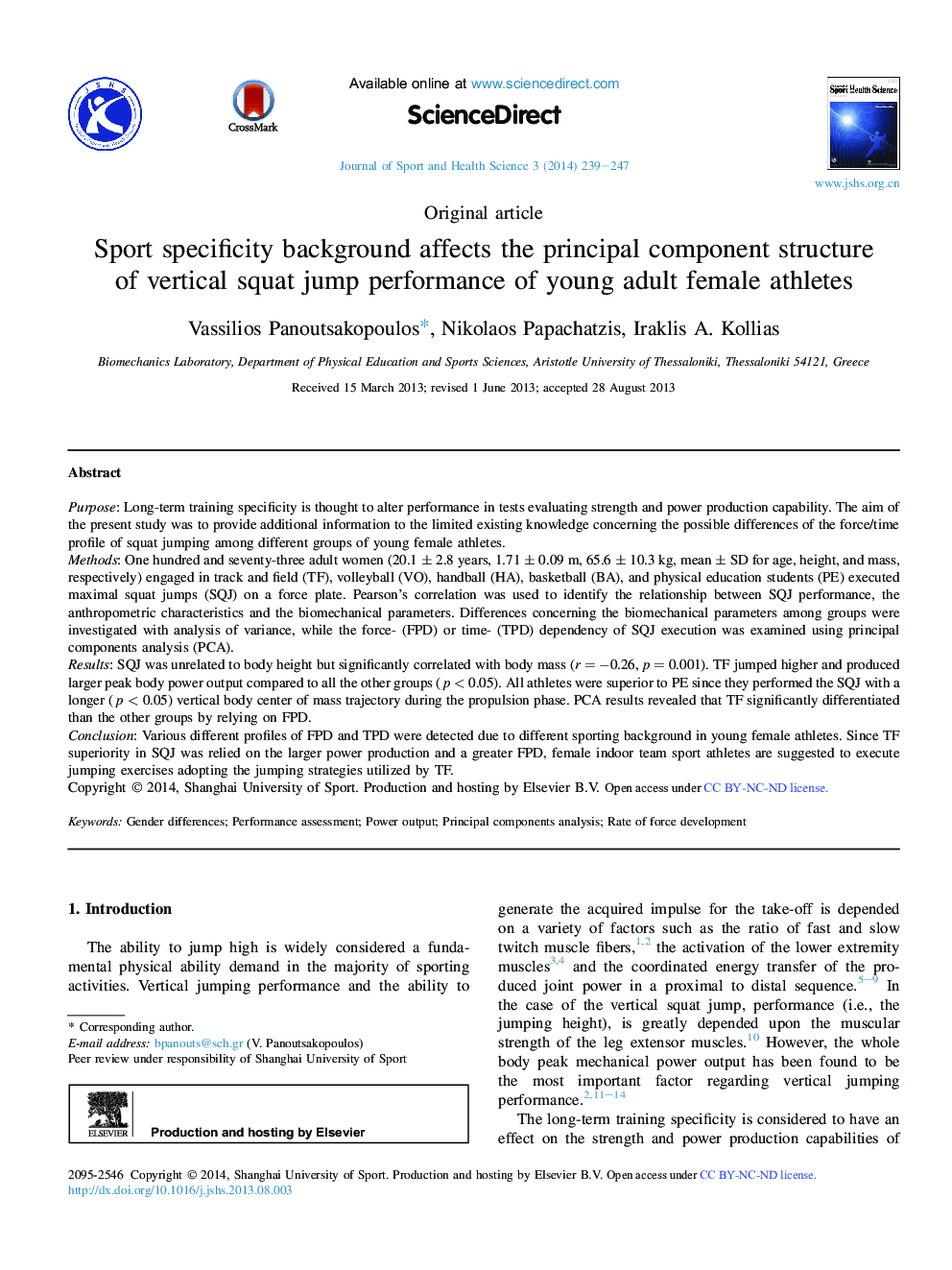| کد مقاله | کد نشریه | سال انتشار | مقاله انگلیسی | نسخه تمام متن |
|---|---|---|---|---|
| 1084176 | 951262 | 2014 | 9 صفحه PDF | دانلود رایگان |
PurposeLong-term training specificity is thought to alter performance in tests evaluating strength and power production capability. The aim of the present study was to provide additional information to the limited existing knowledge concerning the possible differences of the force/time profile of squat jumping among different groups of young female athletes.MethodsOne hundred and seventy-three adult women (20.1 ± 2.8 years, 1.71 ± 0.09 m, 65.6 ± 10.3 kg, mean ± SD for age, height, and mass, respectively) engaged in track and field (TF), volleyball (VO), handball (HA), basketball (BA), and physical education students (PE) executed maximal squat jumps (SQJ) on a force plate. Pearson's correlation was used to identify the relationship between SQJ performance, the anthropometric characteristics and the biomechanical parameters. Differences concerning the biomechanical parameters among groups were investigated with analysis of variance, while the force- (FPD) or time- (TPD) dependency of SQJ execution was examined using principal components analysis (PCA).ResultsSQJ was unrelated to body height but significantly correlated with body mass (r = −0.26, p = 0.001). TF jumped higher and produced larger peak body power output compared to all the other groups (p < 0.05). All athletes were superior to PE since they performed the SQJ with a longer (p < 0.05) vertical body center of mass trajectory during the propulsion phase. PCA results revealed that TF significantly differentiated than the other groups by relying on FPD.ConclusionVarious different profiles of FPD and TPD were detected due to different sporting background in young female athletes. Since TF superiority in SQJ was relied on the larger power production and a greater FPD, female indoor team sport athletes are suggested to execute jumping exercises adopting the jumping strategies utilized by TF.
Journal: Journal of Sport and Health Science - Volume 3, Issue 3, September 2014, Pages 239–247
